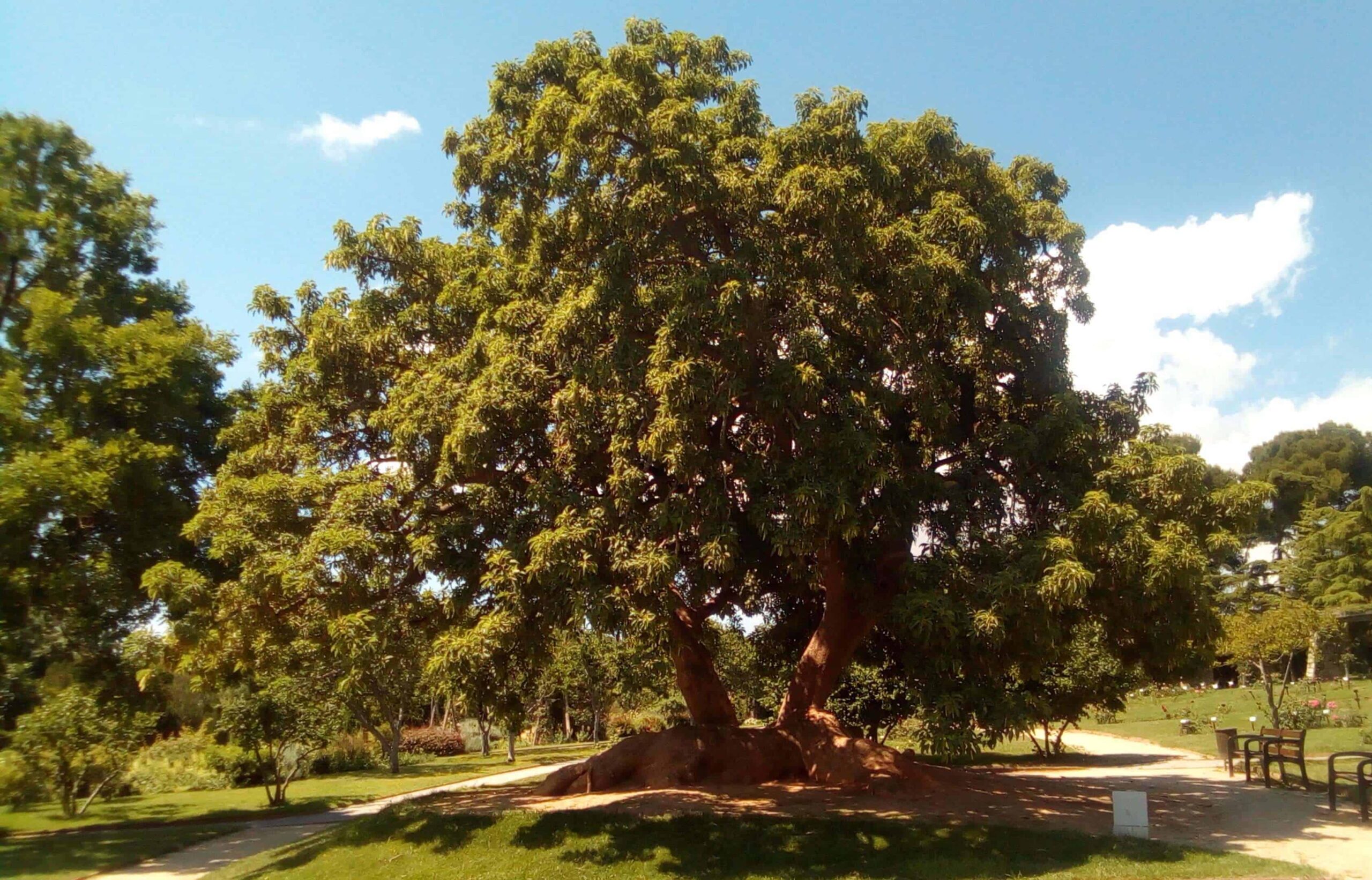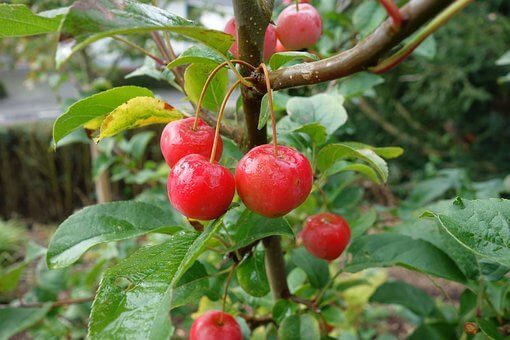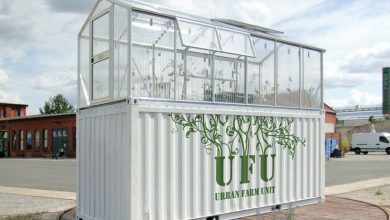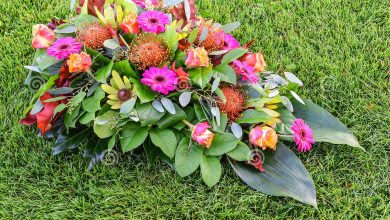How to Plant a Mimosa Tree: [Complete Guide + Step by Step]

When it comes to outdoors, beauty abounds in the large number of species available for sowing, including mimosa ( Acacia dealbata) .
Its breadth and yellow bloom It gives a very relevant touch to any environment, being able to offer color and shade to your garden .
On the other hand, it should be noted that the yellow of its flowers is not the only thing that stands out, since they also have a delicious smell .
If we have already aroused your curiosity , we invite you to fill yourself with the best information with this complete guide.
And that’s it!
- When? The best time is in summer . It is the time when cuttings are easier to extract.

- Where? It adapts to hot and cold climates, but not great frosts. Ideal for Mediterranean or Atlantic climates (not mountainous).
- How do we prepare the land? Likes sandy loam soils. It does not tolerate clay soils. We prepare the land with a good supply of organic matter and compost.
- How do we water? Ideal drip irrigation to keep the soil constantly moist, but without waterlogging. Especially in summer when the rains are scarce.
- Growing time? From seed, the mimosa will take about a year to be noticed. By cutting in about three months.
- Favorable associations? It gets along well with most plants, however it looks very nice with other ornamental plants.
- Plagues and diseases? Special care must be taken with the Fusarium Oxysporum fungus .
When to plant a mimosa?
 The best time to do your sowing is summer, since during this time it is that it is easier to extract cuttings.
The best time to do your sowing is summer, since during this time it is that it is easier to extract cuttings.
It is best not to transplant them , but in case you have the sprout in a pot , the process will have to be done taking care that the root and root ball are included.
In this way, the living conditions inside the pot will not be greatly altered .
Where to make it plant a mimosa?
The main thing to keep in mind when selecting the place is the average temperature that is handled in each season.
The mimosa is an evergreen plant , easily adapting to hot and cold climates , but not to heavy frosts.
However, it can also be given some protection with structures such as walls.
Doing this in areas such as the south and west will also help keep them from being attacked by strong winds that can damage their branches.
But you also have to consider that direct sunlight does not cause you major problems, so at this point the care needs decrease.
How do we prepare the land for growing a mimosa?
 When it comes to planting mimosa, you have to be very attentive to the characteristics of the soils , because without being highly demanding , it does give itself some tastes.
When it comes to planting mimosa, you have to be very attentive to the characteristics of the soils , because without being highly demanding , it does give itself some tastes.
The first thing is to verify that you have a loamy or sandy texture, in either case it will be fine for you.
However, we must pay attention to the fact that does not tolerate no clay soils.
Their preparation should be done a couple of months before starting the sowing process , as they need a well-nourished soil . To get your favorite nutrients, compost is your favorite candidate .
For this reason, it will be necessary to pay before planting and carry out the same procedure around the trunk of quarterly.
As compost is a product that can be made at home (as with worm castings ), the costs generated by the plant are much reduced.
How do we water the mimosas?
The roots of the mimosa tend to spread quite widely throughout the land.
Therefore, it must be ensured that the water reaches the deepest areas because it is a fact that the dry season does not go very well.
The best will be carry out frequent and more or less abundant watering in sunny times, conscientiously reducing the amount in times of rain.
How to plant a mimosa step by step?
When planning the sowing, the information corresponding to the development of the plant must be taken into consideration .
In that sense, we will have to consider the step by step that we present below:
- Carry out the preparation of the land , as it has been arranged in the previous segments.
- You have to dig a hole that is wide and deep . This is to allow the mimosa root to spread well throughout the area.
- After sowing, proceed to cover the hole and follow the care described.
Now, you have to know that the sowing of mimosa can be done in two ways.
Sow by seed
 The first is with the seeds , which will have to undergo an adaptation process so that roots sprout.
The first is with the seeds , which will have to undergo an adaptation process so that roots sprout.
This will be done in a location that has a good humidity level and is shady at all times.
This process will last 1 year, after which the mimosa can be sown wherever desired.
Sow by cuttings
The other step is through the cuttings .
These will be taken from selected stems that have not gone through the flowering process , but are healthy.
The idea will be to plant them with a specific substrate made of sand and peat.
As with the seeds, you will have to be attentive to the shade and humidity , only in this case the process will last 3 months.
What favorable associations does it have?
Being a garden plant , mimosa can have favorable associations with many types of plants.
Especially those plants for ornamental use that do not have abundant roots and that survive in the shade.
However, most people who have a specimen prefer to leave it with grass in its lower part, without associations.
What pests and diseases does mimosa affect?
When sowing and growing any type of plants , you have to pay close attention to the issue of pests and harmful effects .
The main reason for this is that it does not attack the leaves of the plant from the beginning , but rather spreads from the roots, achieving a greater impact.
This internal process is difficult to notice until the changes become more visible , as its movement is through the sap.
Having a tree of these characteristics at home is one of the best decisions that can be made.
Even when it does not produce fruit, its flowering is abundant and, in general, it needs little care after sowing has been achieved.

Sow Mango: The Step-by-Step Guide you need to eat this delicious fruit [12 Steps]
Leer Más

How to Plant an Olive Tree Step by Step: [Complete Guide + Images]
Leer Más

Hackberry or Lidonero: [Sowing, Care, Irrigation, Substrate, Problems]
Leer Más
The Pine: [Planting, Characteristics, Irrigation, pH, Pruning, Problems]
Leer Más
The Jacaranda Tree: [Characteristics, Sowing, Care, Irrigation and Substrate]
Leer Más
The Acacia Tree: [Characteristics, Sowing, Care, Irrigation and Substrate]
Leer Más

Algarrobo: [Cultivation, Irrigation, Care, Pests and Diseases]
Leer Más

Medlar: [Cultivation, Irrigation, Care, Pests and Diseases]
Leer Más

Kaki: [Cultivation, Irrigation, Care, Pests and Diseases]
Leer Más

Kiri: [Cultivation, Irrigation, Care, Pests and Diseases]
Leer Más

Holm oak: [Cultivation, Irrigation, Care, Pests and Diseases]
Leer Más

Ceibo: [Cultivation, Irrigation, Care, Pests and Diseases]
Leer Más

Black poplar: [Cultivation, Irrigation, Care, Pests and Diseases]
Leer Más

Budleia: [Cultivation, Irrigation, Care, Pests and Diseases]
Leer Más

Bella Sombra: [Cultivation, Irrigation, Care, Pests and Diseases]
Leer Más

Hackberry: [Cultivation, Irrigation, Care, Pests and Diseases]
Leer Más

Tree of Love: [Cultivation, Irrigation, Care, Pests and Diseases]
Leer Más

Canadian Poplar: [Cultivation, Irrigation, Care, Pests and Diseases]
Leer Más

Carambolo: [Cultivation, Irrigation, Care, Pests and Diseases]
Leer Más

Acerola: [Cultivation, Irrigation, Care, Pests and Diseases]
Leer Más





